
Pacific Cup Finishers Roll In
It’s been a busy weekend in the Pacific Cup with much of the fleet in the barn at Kaneohe Yacht Club, including most division winners. First to finish was Charles Devanneaux’s all-new hydrofoil-equipped Beneteau Figaro 3 A Fond le Girafon on Friday. Sailing with an ‘experimental’ rating (handicappers simply didn’t know how to rate it), the new offshore one-design boat proved itself to be a reaching machine and a very fast, stable platform, as the two co-skippers enthusiastically related dockside after their historic finish. The second boat in, with the fastest elapsed time in the entire fleet, was the Shelter Island Transatlantic Partners’ Mills 68 Prospector, which finished just before sunset on Friday with an elapsed time of 7 days, 6 hours and 50 minutes.
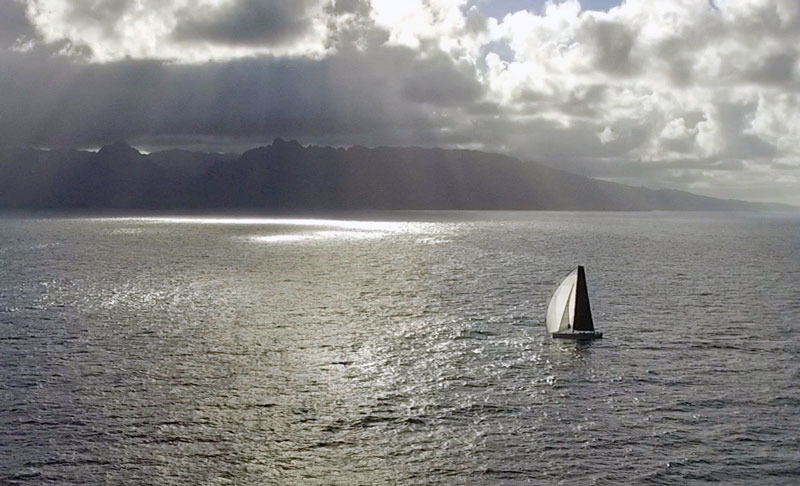
Roy Pat Disney’s Andrews 68 Pyewacket sailed in on Saturday morning to claim the BMW of San Rafael E Division. Not a bad homecoming for local boy and KYC member Mark Towill, of Vestas/11th Hour Volvo Ocean Race fame, who was aboard.
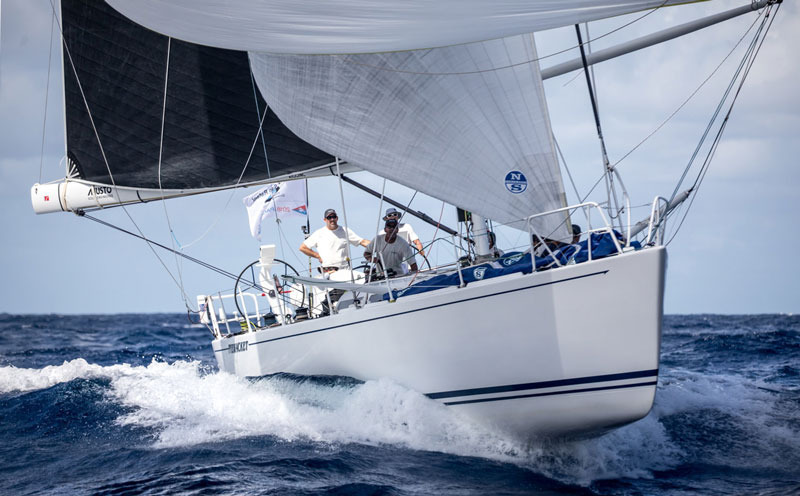
One of the most anticipated battles in the entire race, a six-boat doublehanded Express 27 division, lived up to the pre-race hype and even offered a bit of a surprise as Andy Goodman and his girlfriend Julia Paxton de-throned cousin and renowned pro sailor Will Paxton and his boat partner Zachery Anderson.
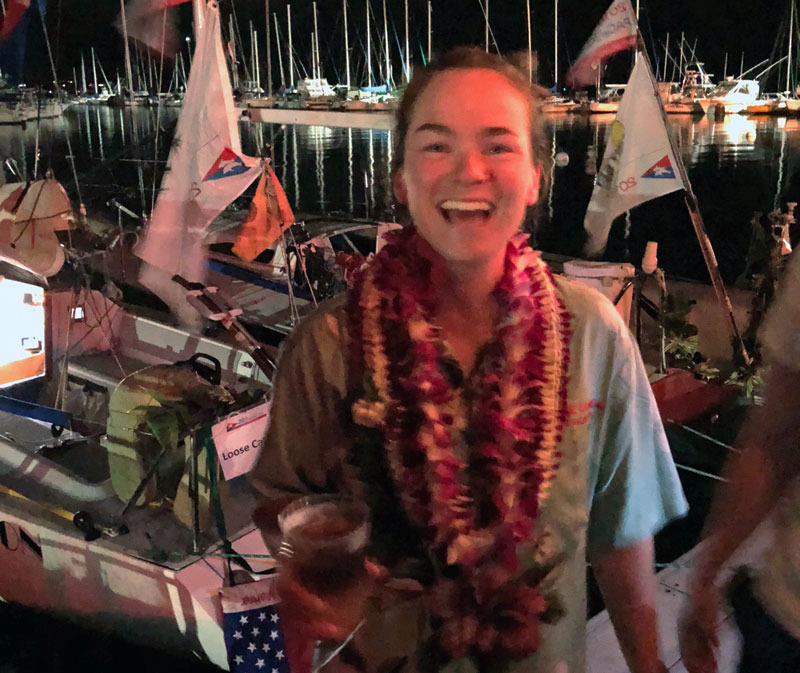
In the other doublehanded division, Vestas/11th Hour Volvo Ocean Race boss Bill Erkelens and his wife Melinda won a super-competitive race on their Donovan 30 Wolfpack — their third Pac Cup win in a row — beating out KYC commodore Frederic Berg and his co-skipper Mikey Bacon on the Antrim 27 Bacon Berger.
The top cruisers came in with reports of some solid full-send-mode carnage. At the head of the fleet, a pair of Hanse 505s came rumbling in. Don’t sell the cruisers short: The winning boat Anaïs had San Diego Ullman sailmaker Chuck Skewes aboard while second-place Outremer had Vendée Globe super stud Tanguy de Lamotte on the crew.
Kaneohe is going off right now with boats coming in around the clock and the bulk of the fleet finishing between Sunday and Tuesday. Several divisions are still up for grabs, though it looks like Richmond’s Rufus Sjoberg and crew on Rufless are going to make history soon as the first Melges 32 to win its division in a major Category 1 ocean race.
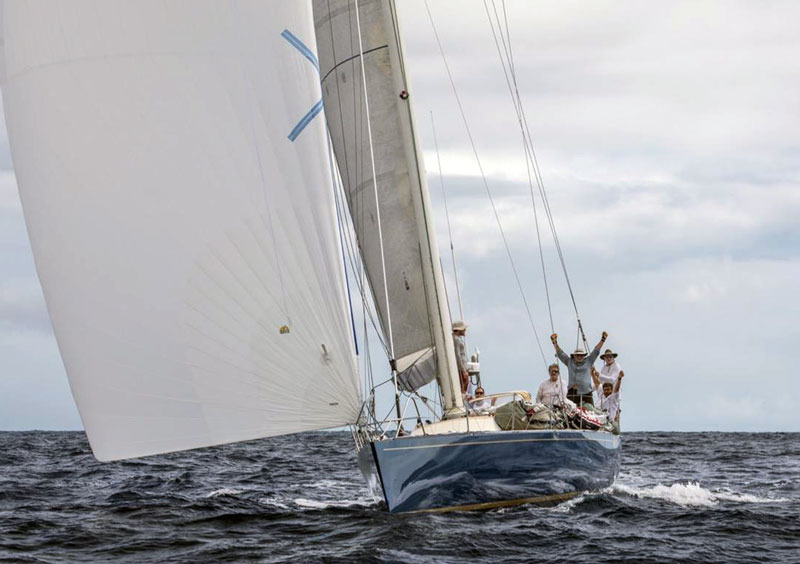
With roughly half the fleet relaxing in the islands while the other half is still racing toward a warm Kaneohe welcome, there’s plenty of action left. Stay dialed into the website, YB tracker, Facebook and Instagram, see the galleries from Hawaii’s fine sailing photographer Lauren Easley, and check out these videos of the first two finishers and the weekend arrivals.
The Dutch Shoe Marathon
As adults, it’s easy to forget how awesome summer is for kids. For three months, there’s no school, and kids live at the beach or the docks in a near-constant state of play.
Friday saw San Diego Yacht Club’s 49th running of the Dutch Shoe Marathon, when approximately 5,000 Sabots take to San Diego Bay, racing from Shelter Island to Coronado.
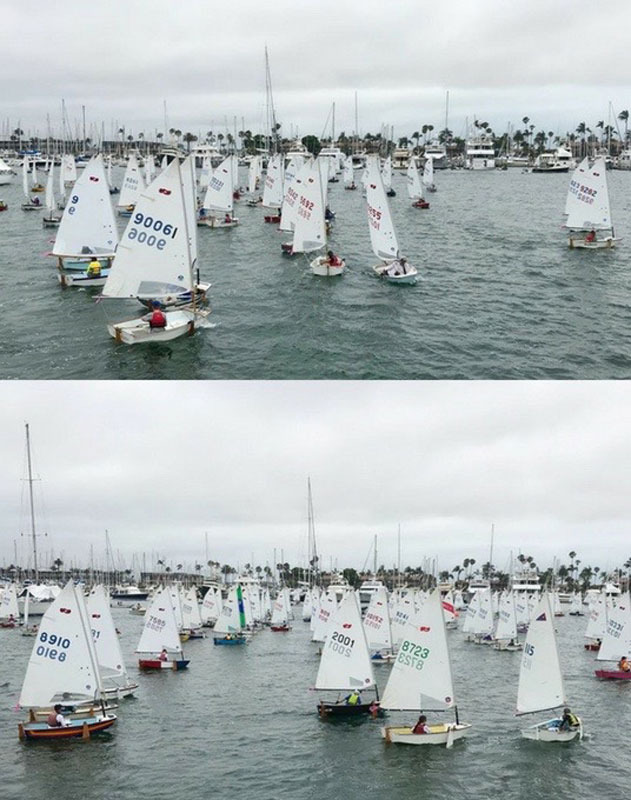
Part of the Dutch Shoe tradition is having the Sabot flotilla share the water with the US Navy and its assortment of BGSs (Big Gray Ships).
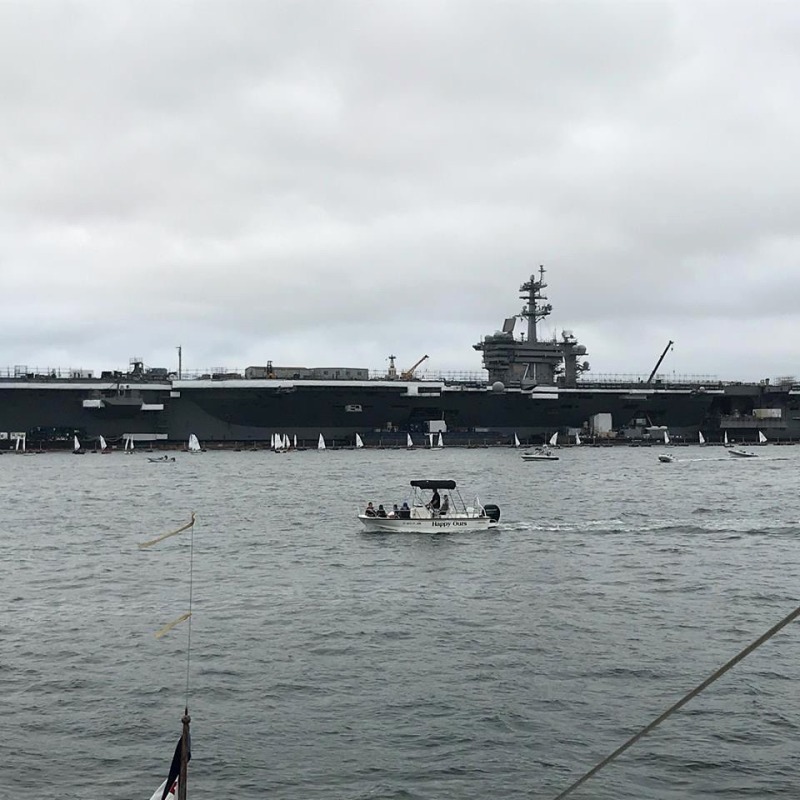
The Dutch Shoe is not just for kids, there’s also a senior division. When you’re an adult, it’s important to hone your inner 12-year-old and carve out a bit of summer break for yourself.
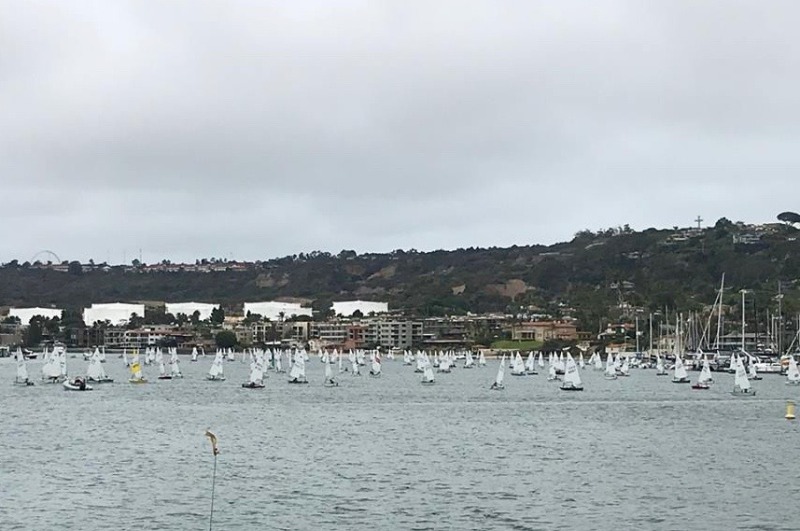
Stay tuned to this very ‘Lectronic for more kids, summer and sailing.
SF Boys Enjoy Belgian Conditions
"Two Northern California Optimist families headed to Belgium for Nieuwpoort Race Week," writes Cindy Wondolleck.
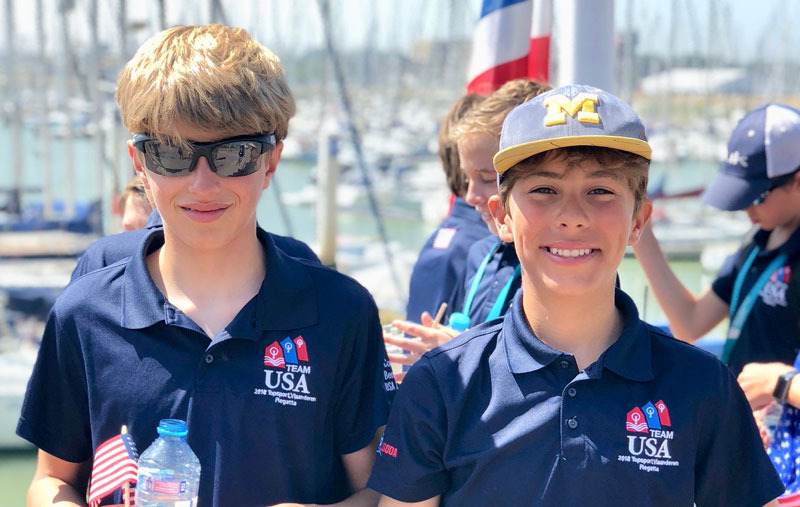
"At the US Optimist Team Trials in Key Biscayne, Florida, Dylan Wondolleck and Connor Bennett qualified for the USA Optimist team going to Belgium. They joined a team of 14 kids and two coaches from the US; all arrived in Belgium on June 26. They practiced for four days out in the North Sea, just up the coast from where the movie Dunkirk was filmed. The conditions varied, but it was mostly windy with waves and a strong current. Our San Francisco boys felt right at home."
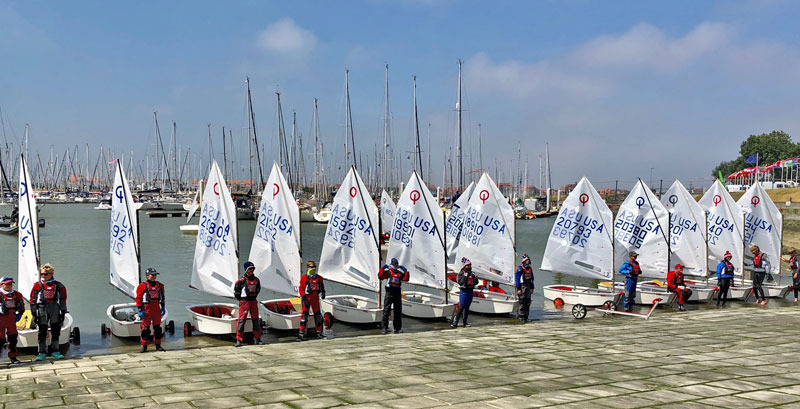
The regatta hosted 10 countries on July 1-4. "Dylan came in 24th/first American and Connor came in 33rd out of 110 boats." Connor sails for San Francisco Yacht Club; Dylan sails for Encinal YC and SFYC.
Bay Area Beatdown
We want to put another call out to any and everyone with a good sea story (or picture). Is anyone cruising the Channel Islands? Who’s doing unexpectedly well in their local beer cans? How are things looking in the Pacific Northwest this summer? We’d like to know.
Here’s our sea story du jour, or our most recent lesson learned: We are constantly being schooled by San Francisco Bay. As we’ve reported at length, our new editor was given a 1963 Columbia 24 last fall, and has been getting his feet wet sailing out of San Rafael. After having some problems with his outboard motor in the spring, he finally got a taste of proper Bay Area summer conditions this weekend. (Those motor "problems" were the result of having never flushed the engine, an issue first discovered when opening the owner’s manual to the first page, which stated, in no uncertain terms, FLUSH ENGINE AFTER EVERY USE. The boneheadedness offered an opportunity to learn some engine maintenance; we tore down the motor to liberate a salt-encrusted thermostat, cleaned and replaced parts, and managed to put it all back together in good working condition.)
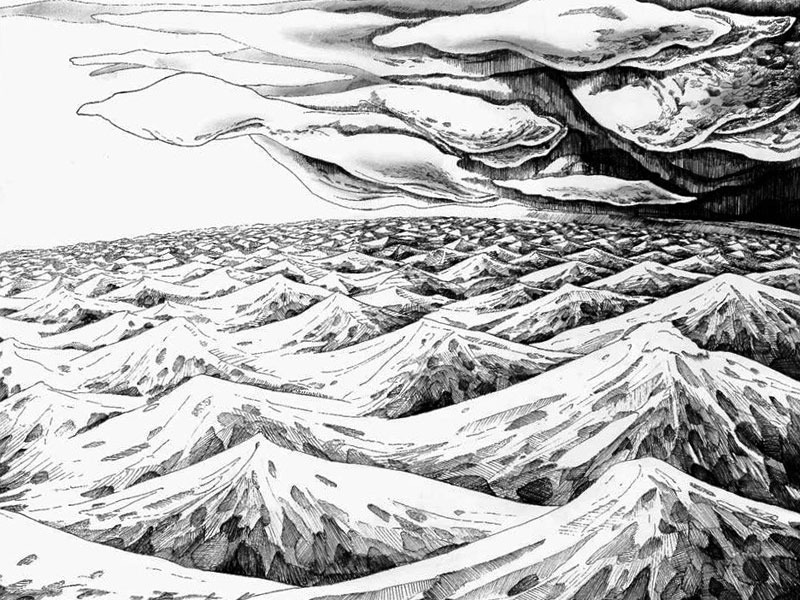
© Latitude 38 Media, LLC
On Saturday, the Bay was nuking. As we motored out of San Rafael around noon, the water was studded in white. This was probably my 20th sail since October, but only the second time with any real wind. We headed south with the ebb toward the Richmond/San Rafael Bridge on just the main to see how we handled the breeze. I’m not sure that was the smartest choice, as going out onto the bow in chunky, three-foot chop to attach the jib halyard was a little intense (I didn’t like having the halyard attached but slack and swinging loose). At this point, the wind was groaning through the rigging; it was a completely ominous, almost beastly sound.
The boat sailed nicely with a reefed main and 80% jib, but once we passed the bridge, it was Victory at Sea. My friend drove while I worked the main, having to luff it more often than not. Every five seconds we would smash into a wave and take torrents of water over the bow. We sailed on starboard toward Red Rock, then tacked to port, where the waves were a little more on the bow quarter, but it was never not intense. The violence of the boat — and the rhythmic, steady BA-BOOM! when we plowed into a wave every ten seconds or so — was completely humbling. Being the first time we had a soaking-wet cockpit, I was alarmed to find how slippery my precious footholds had become. I braced myself as best I could, and noticed that I’d cut my foot (probably on the base of the tiller), and was trickling blood all over the cockpit and mainsheet. We were getting our butts kicked.
We evaluated our game plan — the idea was to sail both ways with the tide, taking the ebb to Angel Island and riding the flood back to San Rafael. But that meant at least another 45 minutes in that gnarliness, and I wasn’t sure what the anchorages would look like at Angel given the breeze. It was time to abort; we high-tailed it back to the bridge on a dramatically more comfortable angle, though driving off the wind in such thick swell was no easy feat. An hour later we were anchored at China Camp for lunch, and licking our wounds.
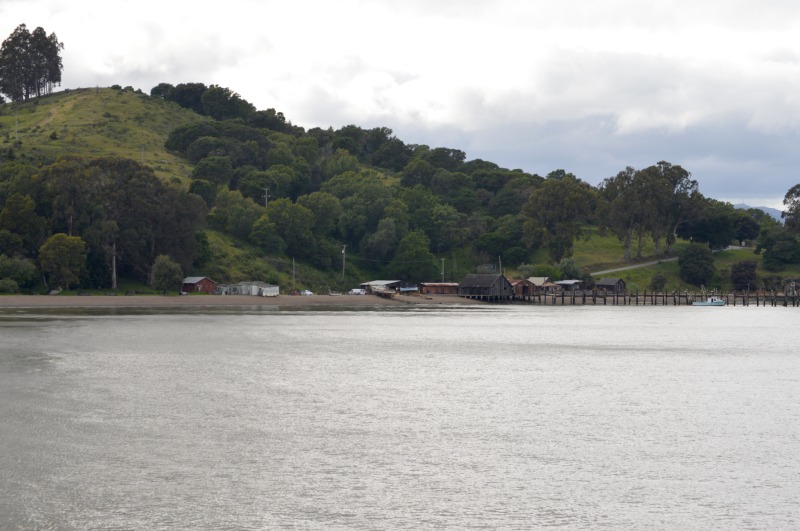
© Latitude 38 Media, LLC
I wasn’t too worried about sailing against the flood, thinking there would be plenty of wind to sail against the tide. I’m not sure that was the smartest choice. As we weighed anchor (sailing away on the main), we noticed the jib halyard all the way up the mast. Whoops. We seemed to be making decent headway with just the main, so I started readjusting a spare halyard. But after about 40 minutes, we were in exactly the same spot, as if we’d been sailing on a treadmill. We finally raised the jib, but it didn’t make any difference. We had about an hour of daylight left, and had to fire up the motor.
.jpg)
©2018 Latitude 38 Media, LLC
The waters were relatively flat in San Pablo Bay, but once we punched through the channel between the Sisters and Point San Pedro, it was full on again, and we were motoring dead upwind and up-current in 20 knots of wind with steep, three-foot seas. The boat’s motion was appalling, shaking everything to the core and sending buckets of water over the bow again. There were moments when I wondered if this was the smartest choice, and in the back of my head, I was thinking about an exit strategy. Should we go back to China Camp and anchor overnight?
PHOTO
But we eventually made (excruciatingly slow) progress, and there was nothing to do but bash into it for 40 minutes and think good thoughts about the motor. By the time we got back to the dock, it was completely dark, we were soaking wet, and we’d been thoroughly beat down by the Bay.
Have you been beaten up recently? As always, we’d like to hear.
